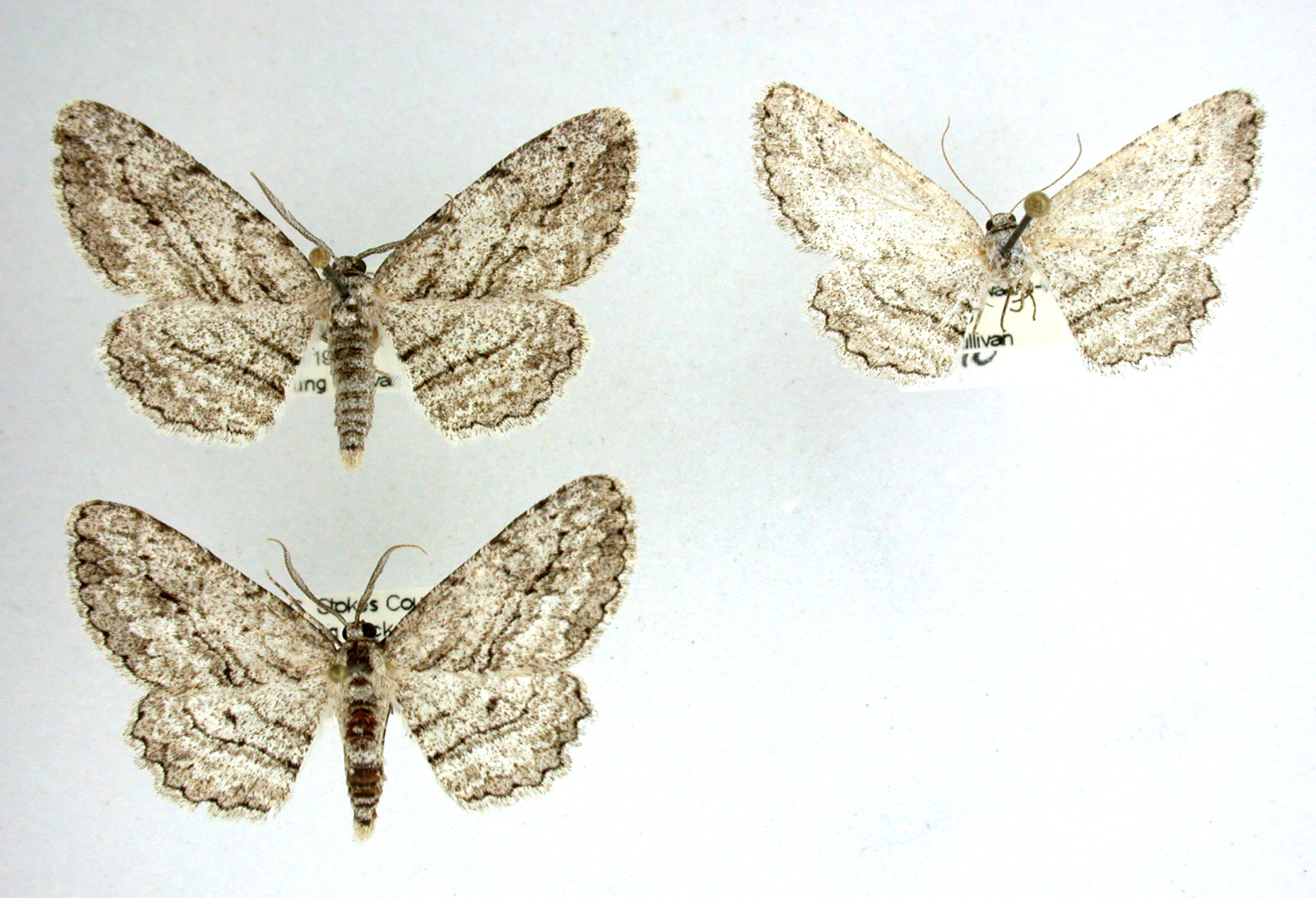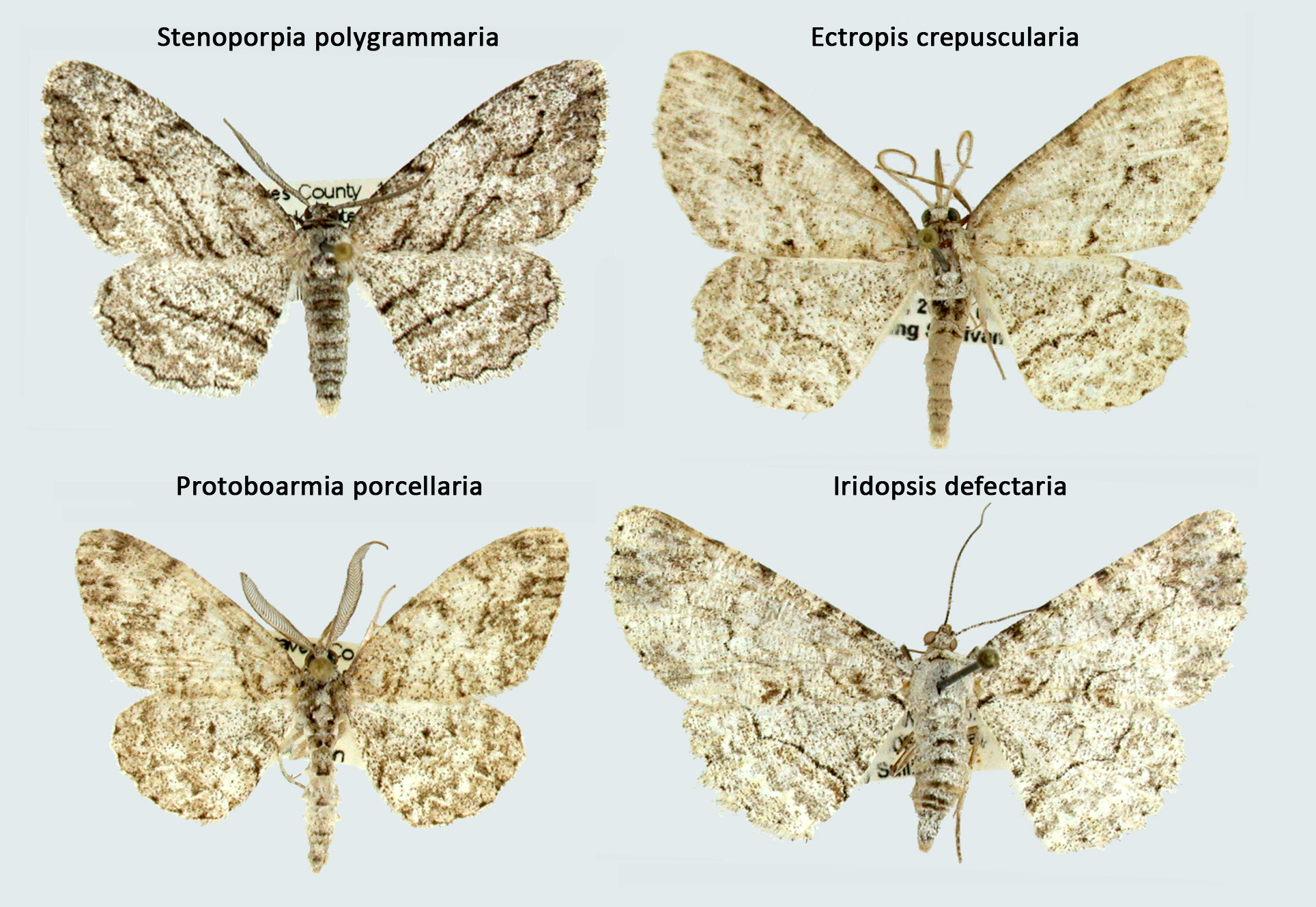
view caption
Males: left top: May 6, 1997, Stokes County, J.B. Sullivan. Left bottom: May 1, 2000, Stokes County, J.B. Sullivan. Female May 6, 1997, Stokes County, J.B. Sullivan. | 
view caption
Comparison to similar species. Male Stenoporpia polygrammaria: May 6, 1997, Stokes County, J.B. Sullivan. Male Ectropis crepuscularia: April 13, 2011, Craven County, J.B. Sullivan. Male Protoboarmia porcellaria: April 22, 1999, Craven County, J.B. Sullivan. Female Iridopsis defectaria: June 19, 2006, Craven County, J.B. Sullivan. |

 »
»


 »
»
